“The Acolyte” Costume Designer Jennifer Bryan on Dressing Jedis, Witches, Wookies & More
Note: this interview contains spoilers for the first three episodes.
In its newest Star Wars franchise, The Acolyte, Disney+ heads back in time to a century prior to the rise of the Galactic Empire. Amandla Stenberg stars as identical twins Osha and Mae, the former an ex-Jedi Padawan and the latter a vengeful warrior on the run. Both can use the Force, although the Jedi Order is neither twin’s birthright — the girls’ early childhood was spent in a coven of witches on Brendok, led by Mother Aniseya (Jodie Turner-Smith) and Mother Koril (Margarita Levieva). Jedi meddling seems to have brought Osha and Mae to divergent, if similarly bleak, present-day situations, without family ties or any knowledge, initially, that the other is still alive.
In The Acolyte era, the Jedi Order presides over a time of relative peace. From Carrie-Ann Moss’s Indara to Master Sol, played by Squid Game star Lee Jung-jae, we see more of the Jedi than in other recent Star Wars installments. Opposite this familiar society is that of the Brendok witches, a private, earthy sect new to this universe. In terms of dress, the two orders mirror each another, clad in natural textiles and hooded cloaks, although they share no further affinity for one another. For costume designer Jennifer L. Bryan (Better Call Saul, Genius), the show was a period piece that required costumes specific to this world that also maintained a sense of continuity with the characters we know decades on.
We spoke with Bryan about incorporating subtle differences among the various Jedi, creating the Brendok aesthetic from the ground up, and leaning into prints and fabrics we haven’t seen before.
We’re dealing with a case of identical twins. How did you dress them to subtly set them apart?
When you first see Mae in the assassin robe, she’s covered in a mask. That’s something we came up with in the later stages of the design. You just see her eyes, and her hairstyle is slightly different. She’s been on the run her whole life. Her family has been destroyed. She’s got a hit list. One of the things we did, which I presented to Leslye [Headland], our showrunner and amazing creator and director, was to have it look like she assembled this look during her journey. The purple in her robe refers to the color worn by the witches during the ascension in episode three. It’s a familial memory connection. It’s subtle. Of course, you don’t know it until you watch the third episode, but my hope is that the audience subconsciously reconnects to that really important event when the Jedi interrupt the ascension ceremony. I look at that as the last link. What was predominant that night, which a costume designer can use, is the color and a cloak that’s hooded, which reflects back to the cloaks of the Jedi. It’s a double-mirror image of her childhood. I designed that cloak with patches so it’s not cut from one solid material. It’s a fabric I created from an assortment of handwoven cottons and gauzes, and then we dyed it purple.
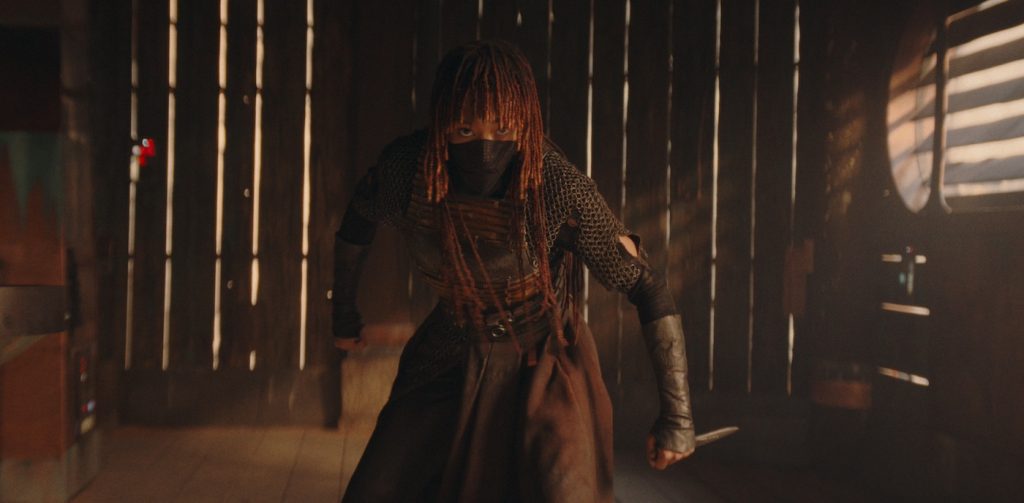
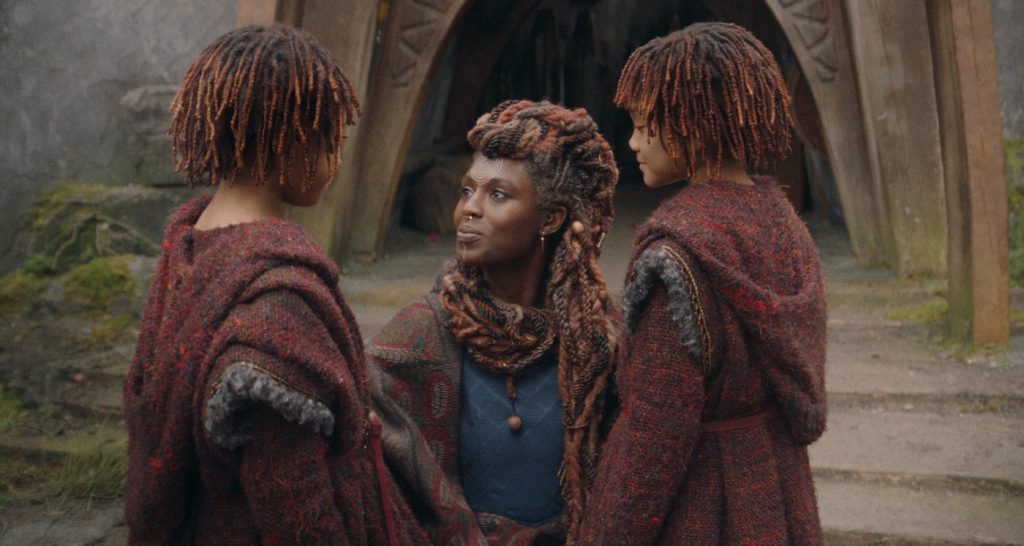
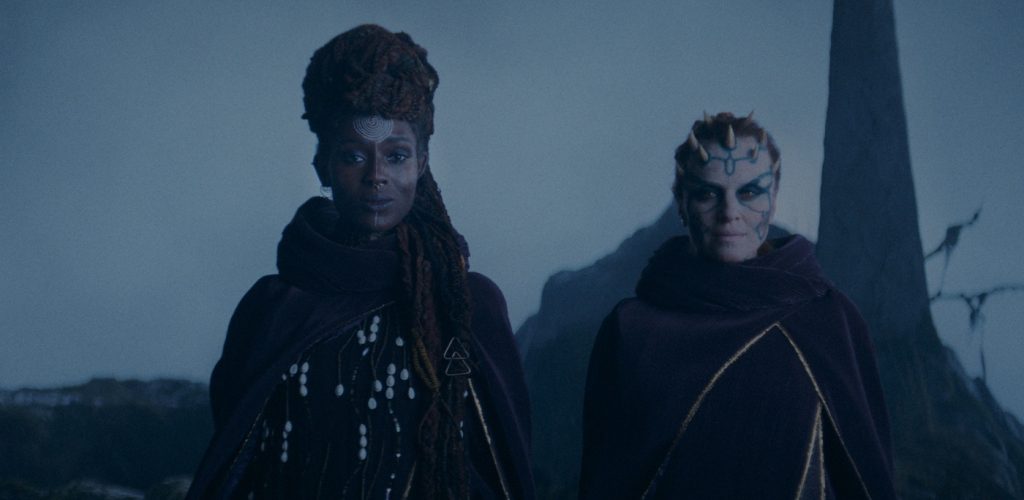
This story takes place 100 years before the Empire. Did you think of the costumes as “period?”
It’s tricky when you have such iconography and canon. There are decades of creatures and characters. It’s period within sci-fi. My advantage was that, because it was 100 years before, I had some design freedom to do things that hadn’t existed yet. My responsibility, story-wise, was to connect it to what we’ve already seen. There were a lot of creatures and characters that we know in Star Wars, which, in my period, didn’t exist yet. I didn’t have to consider, for example, Storm Troopers. I had that freedom, but at the same time, I had to design the robes and the Jedi with some continuity to what we already know is going to happen in Star Wars. So the Jedi, yes, I did conform to the classic lines on the garments, but one of the things I did was change the color scheme — so you see that honey-turmeric color, which I just love. It makes sense that it’s not a crazy color that wouldn’t transition into the future. But I did keep the brown mission cloak. It’s that Obi-Wan Kenobi and Anakin Skywalker connection. We don’t want to lose that.
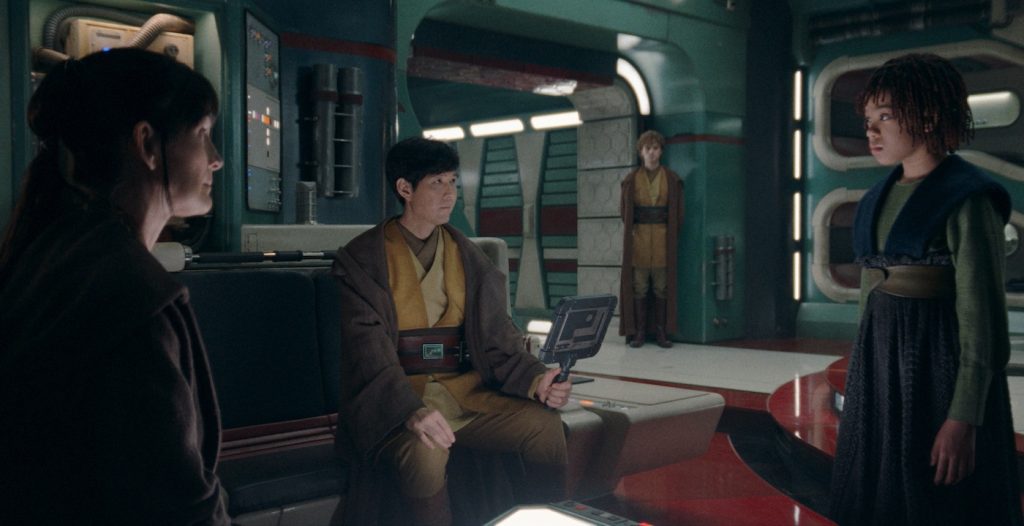
How did you use dress to separate the individual Jedi?
One who stands out is Yord [Charlie Barnett]. He’s fastidious. He’s the first Jedi you see who steams his Jedi cloak on camera. When he first comes out of the freighter in episode one, he lifts his cape so he doesn’t sit on it and crush it. I thought that was a really great signal. I designed his cloak a little more ostentatiously — it’s got this cowl in the front, and it’s more fashion Jedi. When you see the Jedi collectively, you do see differences, especially in their Coruscant cloaks. Sol, in that opening scene, is almost ankle-length. When he turns, it’s very majestic. For Yord, everything has to be in place. And, of course, for Indara, it’s softer and more feminine.
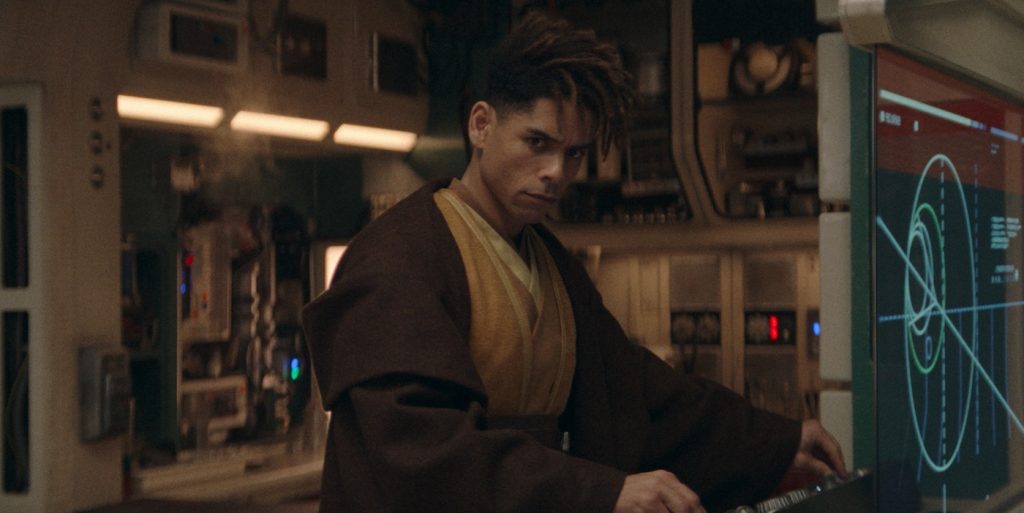
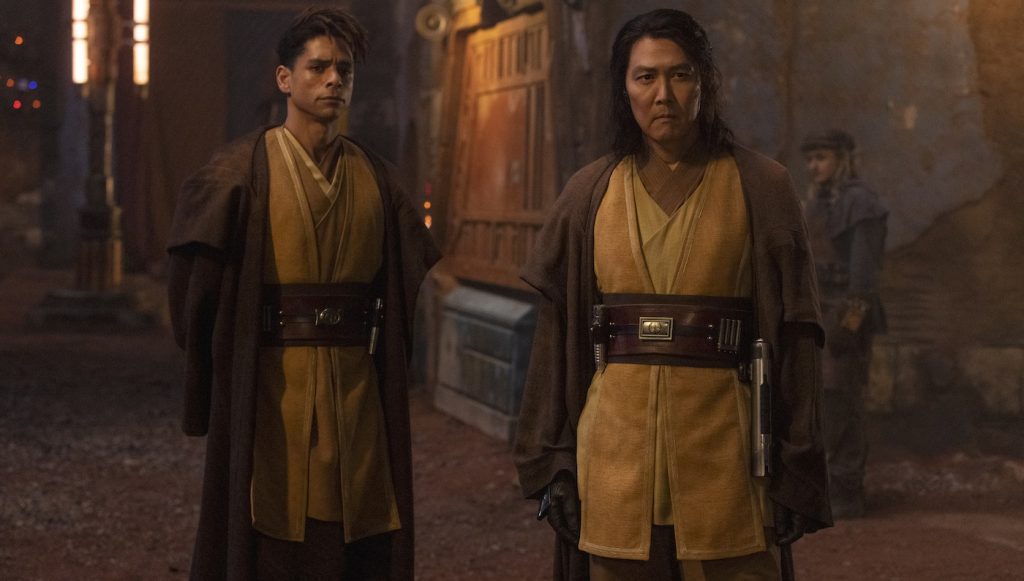
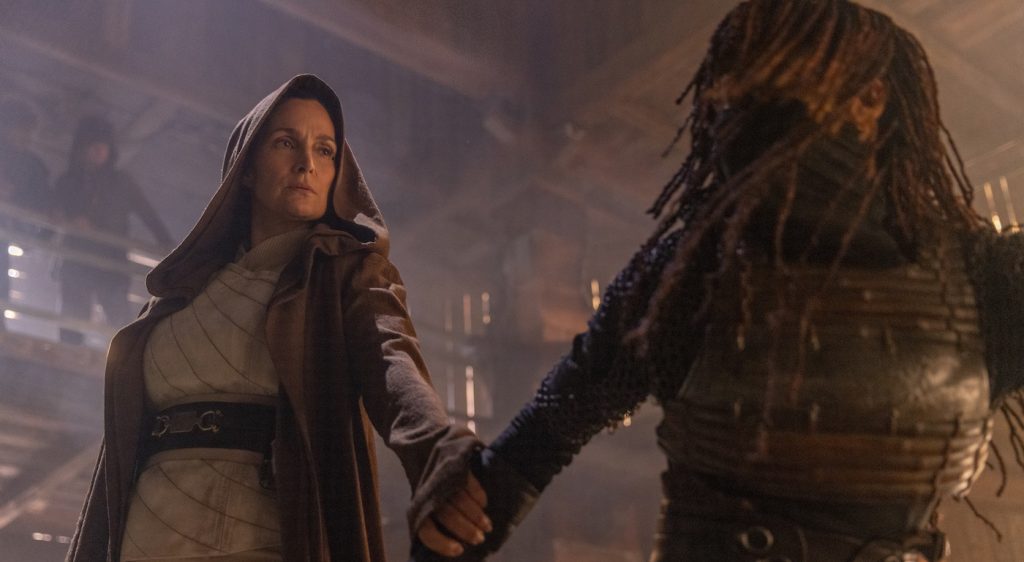
The coven looks are elaborate but earthy. How did you approach them? They’re all new to the Star Wars world.
I used color throughout this show and maybe a little bit more intensely than we’ve seen. You’ve got the turmeric color of the Jedi. Then, with the coven, I chose purple. It’s the color of royalty. I wanted them to look elevated and show they had their own foundation as a community. In moving up the ladder in that community, you have Mother Aniseya and Mother Koril. Their clothes are the same design but set apart. When you see Jodie Turner-Smith, there’s no question, visually, that she’s a leader. Her cloak has a bit more volume. My inspiration was going into ancient civilizations that are more matriarchal than patriarchal. This society is very self-functioning. Women can run, manage, and move about, but they still look beautiful and elegant. They don’t have to look masculine; we didn’t want them to be in pants. They’re all in some dress form or cloak form. I leaned into some African prints. If you’re conscious of it, you’ll see it on an overskirt the twins wear — it’s almost between ikat and mud cloth. It’s subtle, but I intended not to have everything flat.
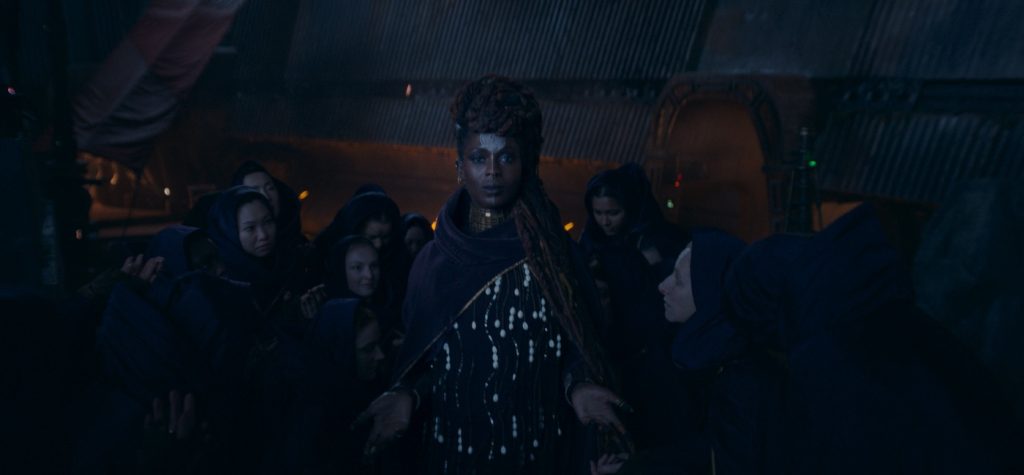
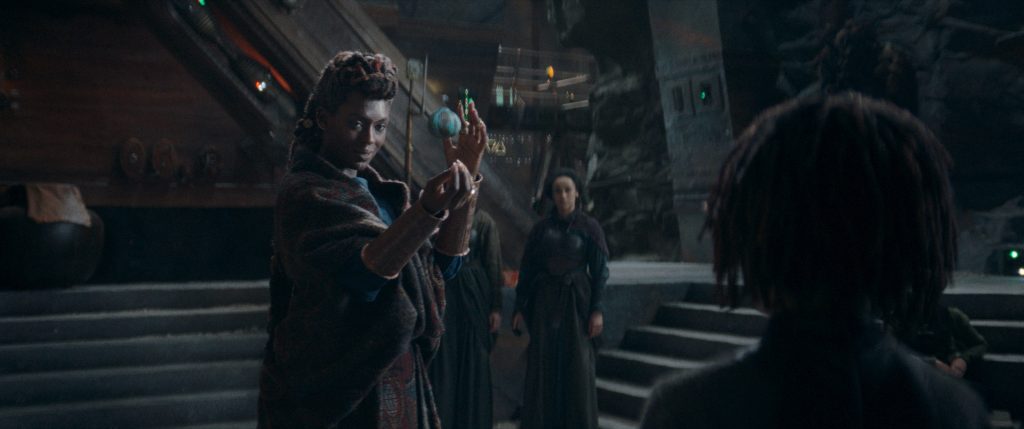
How do you dress the non-human creatures who populate this world?
Their faces and bodies would be designed by the creature department — it’s actually called the creature department. Then, they would send over a 3D-scanned replica of the actual body. In some cases, the shoulders are very wide, or there’s a big humpback or a big barrel torso. Certainly outside the realm of normal proportions for a human being. From there, I’d start to sketch and design for that particular shape. The second consideration with the creatures and the stunt guys in these shapes is that their clothes have to accommodate the choreography — flying over the table, fighting, almost all of them had some kind of physical interaction with Mae.

What’s your team like on a series like this?
I had amazing tailors, cutters, and mold-makers. I always want to give them a little love and say what a team effort it was. Sometimes, I’d find one small thing but need thirty of them, and I bring it to the guys who’d put it into CAD, and then I could get thirty made. It’s not always just fabrics and textiles — I’m working with a variety of materials, especially on a show like this. Emblems on the Jedi belts, or Jodie Turner-Smith, in her day cloak, has these beautiful bronze cuffs that are actually a set I found in an antique shop in London. The set was from Africa, but it was just one — we had to make sets of them that were rubber-like, so they’d be comfortable for her to wear. In this case, we had rubber versions, semi-hard versions, and then we had distressors and breakdown artists who would work on these until you put them side-by-side and couldn’t tell which was which.
The Acolyte is streaming now on Disney+.
For more on The Acolyte, check out these stories:
“The Acolyte” Composer Michael Abels on Scoring a “Star Wars” Story Unlike Any Before It
Darkness Rises in “The Acolyte” Trailer, Revealing a New Kind of “Star Wars” Series
“The Acolyte” Drops Two Stunning Teasers Ahead of Two-Episode June 4 Release
Featured image: (L-R): Kelnacca (Joonas Suotamo) and Little Osha (Lauren Brady) in Lucasfilm’s THE ACOLYTE, season one, exclusively on Disney+. ©2024 Lucasfilm Ltd. & TM. All Rights Reserved.



